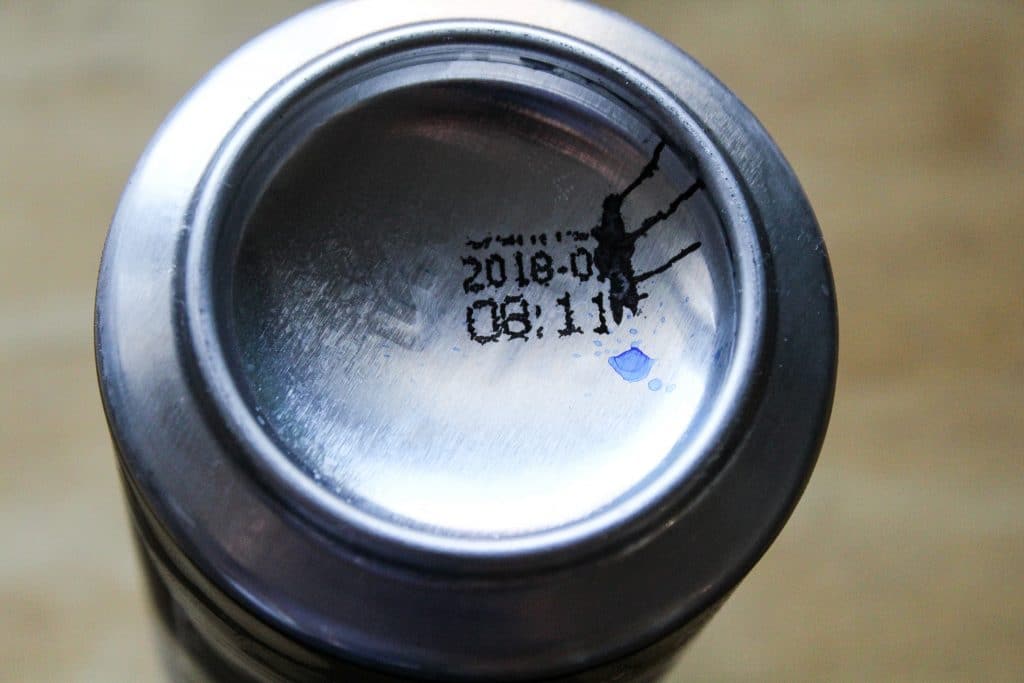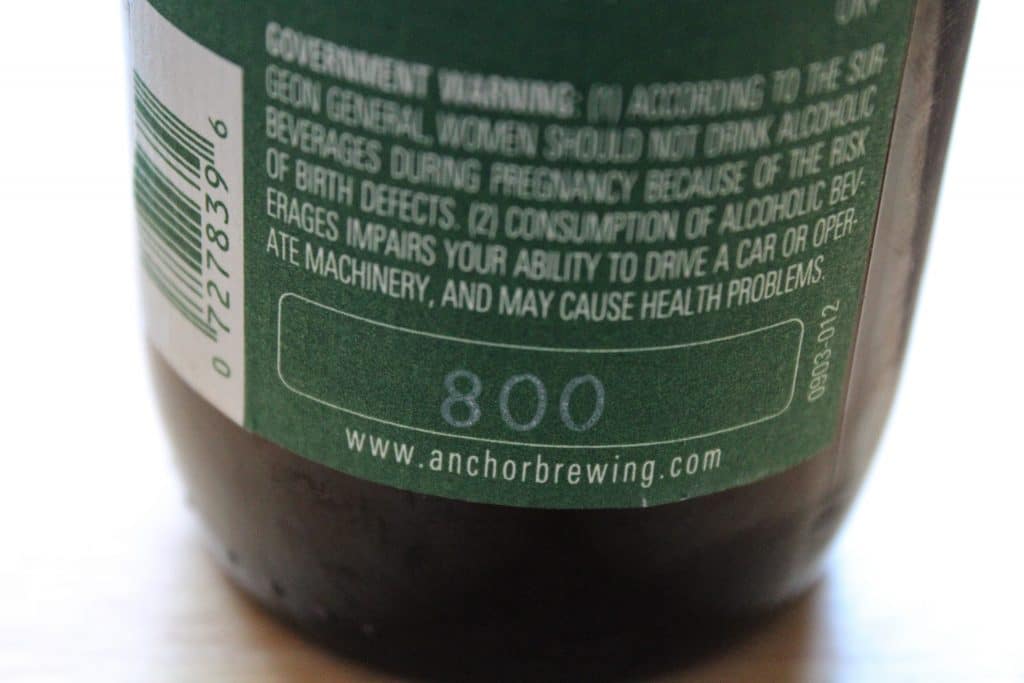How to Read European Beer Expiration Dates

Fresh Beer = Better Beer
Yes, there are some delicious exceptions to the mantra, but most styles are all-time consumed fresh. Acquiring beer directly from the brewery is the best fashion to insure your pint is at its all-time. Nevertheless, a stop at the brewery isn't e'er a possibility. Alas! It'due south the 21st century! No longer are we waddling down the street with steel pails of beer from the saloon, rushing the growler like a 19th century child so that one can enjoy draught beer at dwelling house. (Yous'll have to read Rushing The Growler.) Nosotros take all the conveniences of modern technology that allow united states of america to safely and efficiently bring home our favorite brew in cans and bottles. And how exercise we know the historic period of this packaged beer since it's probably not direct from the saloon taps? Appointment codes!

If only it were and so simple as a momentary glance at the side of the can or bottle to determine if the contents were fit for consumption. For some packaging, it IS that simple. Merely there are many more than leaving my head cocked to the side and my listen twisted with calculations of barely legible letters and numbers. Some breweries forego listing a date code birthday. The ambiguity associated with date codes helps me realize that they truly are codes – peradventure meant for some to decipher, and others to brush off every bit an unimportant jumble of sloppy hieroglyphics. Finding fresh beer shouldn't be and then hard.

Beer is a perishable product, and as such, the producer should provide consumers with a legible, consistent ways of understanding its freshness. If beer for purchase is sitting on a warm shelf for an unknown amount of days, months, or years and I take no ways of instantly knowing when that beer was packaged or when the best by date is, there's a very small take chances I'd be willing to buy information technology. I've been stung too many times, going out on a limb for beer with a mystery engagement code, but to later lubricate my sink drain with its contents. No thank you!
Permit's assume a date code is present and legible (and you can actually find where and how on the package it's printed) – confusion tin can yet grip you like tomorrow's hangover. Many breweries in America have adopted the Gregorian date code (11/11/18 = MM/DD/YY), which is easier to read than a digital clock. Just some adventurous or simply devious breweries in u.s.a. have chosen to use a unlike arrangement, either one they've created or the Julian date lawmaking (118 = 118th mean solar day of the year, 04/28).

The Julian date lawmaking, found near commonly on European imports, is typically used in conjunction with a letter that indicates the year. For 2018, the letter used would be R, which is the 18th letter of the alphabet. When I encounter a Julian engagement code in the shop, I try to figure out the twelvemonth starting time, equally it's the quickest and easiest way to eliminate the possibility of buying the production. Do you actually recollect country employees at the Utah DABC are taking their sweet time to decode their bottles of European beer so they don't send you abode with warm Duvel from 2016? It's possible, but I'd rather accept the time to suss out the appointment myself instead of feeling that sting of pouring dollars down the drain. It's a ridiculous fourth dimension suck, but it'southward meliorate than the chance.

For figuring out the appointment code system of U.s. breweries, the beer gods have granted u.s.a. Fresh Beer Only. The website seems to be under construction, but the important $.25 are all there. If you care enough about neat date codes, you'll take this website saved on your telephone for in-store use. As handy as it is, Fresh Beer Simply does not comprehend beer from other countries, leaving you out in the common cold of the appointment code abyss. Believe me, it'south a lonely hole to climb out of.
I gathered some of the more than cryptic European date codes from the liquor shop, snapping photos of the unintelligible digits and numbers and so I could google them to decease when I got home. Fifty-fifty after combing the world wide web for several hours, unearthing onetime bulletin board posts and digging deep into specific brewery websites, some codes remained uncracked. I didn't bother to reach out to the specific breweries that kept the Rosetta Rock of their date code held closely to their breast, as I don't believe I would have received a response in time for reporting the results to you lot. So until that information surfaces, y'all'll be in the nighttime with the residual of usa.

Three of the codes that I was able to effigy out are from breweries that have a relatively large variety of options available in Utah liquor stores (and probable even larger in other states). They are Samuel Smith, Chimay, and Lindemans. See the photos below for how to best translate their date codes.

Samuel Smith
"SK14Q1"
S = Samuel Smith
Chiliad = 11th calendar month of the year (Nov), 11th letter in the alphabet
xiv = 14th day of the month
Q = 2017, 17th letter in the alphabet

Lindemans
"L BA05RFR"
L = Lindemans
B = unknown
A = 1st month of the year (Jan), 1st letter of the alphabet
05 = 5th day of the month
R = 2018
FR = Framboise

Chimay
"L16-685"
16 = 2016
685 = 685th batch or canteen produced
Note: Chimay Grande Réserve is considered to be best after v years of aging. This one merely needs another three!
Appointment codes can be dirty business, and I don't know why. I tin can have my American mindset may not be in line with European standards, simply there should at least be a way to research how to read the freshness postage on a brewery'southward product. Regardless of where the beer is coming from, I urge everyone to either enforce or demand legible date codes on beer. If you see a smudgy date code on your tin can (or no code at all), bring it to the brewery's attending. If you tin can't decipher a stamped date code, electronic mail the brewery and ask for an explanation (I plan to e-mail Merchant du Vin). As consumers, we should demand transparency from the companies nosotros're supporting with our dollars. Being duped into purchasing erstwhile beer is a terrible affair, and I would think it'due south in the brewery and retailer's best involvement to provide accurate and legible freshness data on packaging.
For more data on carefully selecting beer for purchase, read our mail service, Beer Buyers Beware!.

Freshness shouldn't be a gamble. Potable wisely, friends!
Resources:
Fresh Beer But – https://www.brewersassociation.org/all-time-practices/quality/date-lot-coding/
Julian Engagement Lawmaking Converter – https://www.epochconverter.com/days/2018
Kenary's Blaring Telephone call: Date Lawmaking Your Beer – https://www.brewbound.com/news/kenarys-clarion-call-engagement-code-beer
Brewer's Clan Engagement Lawmaking Standards – https://world wide web.brewersassociation.org/best-practices/quality/date-lot-coding/
Source: https://redrockbrewing.com/craftybeergirls/2018/11/12/date-code-confusion/
0 Response to "How to Read European Beer Expiration Dates"
Post a Comment